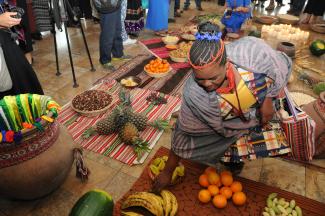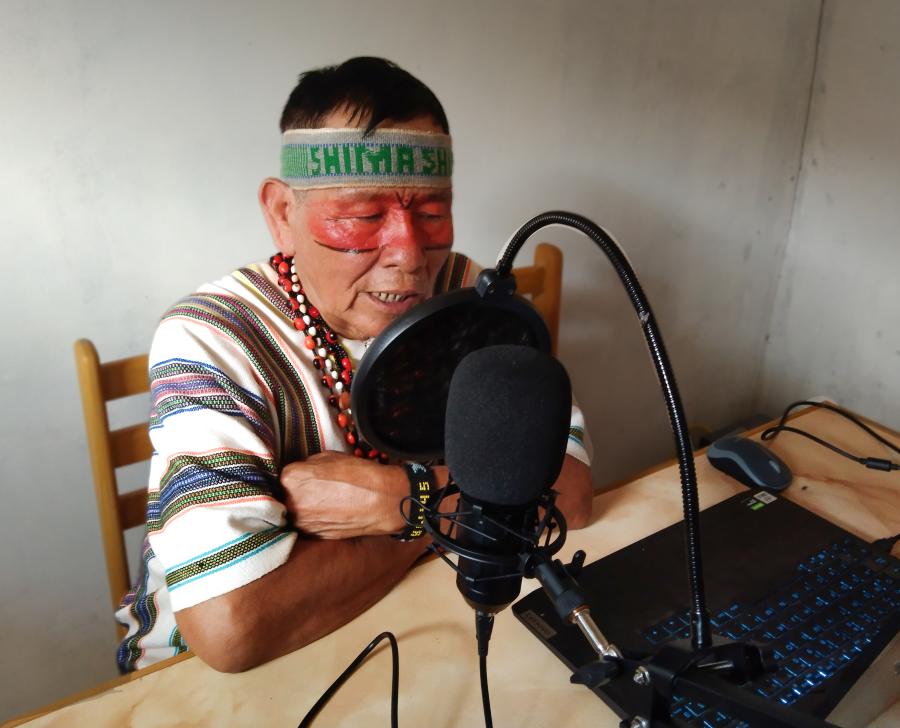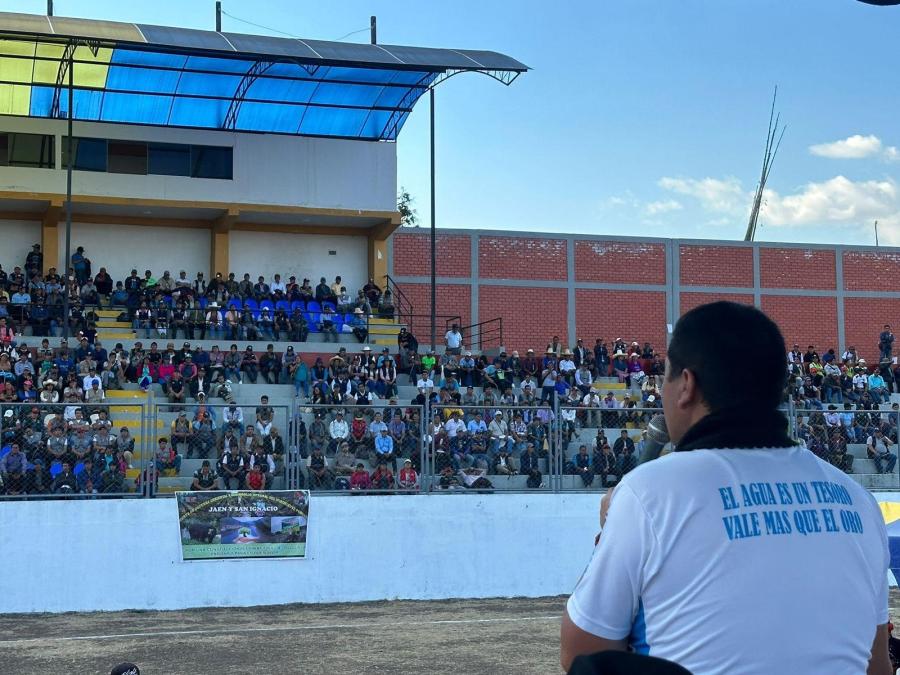
"Food sovereignty is knowing the species we have on our lands, knowing what kind of seeds to plant in each territory.” These are the words of Clemencia Herrera from the Colombian Amazon, a participant in the working group on food sovereignty at the recently concluded World Conference on Indigenous Women. From establishing schools to educate Indigenous youth about traditional foodways to building greenhouses in the Arctic and east Africa, no shortage of proposed solutions emerged from the conference on the issue of food sovereignty—the ability of a people to produce their own food independent of outside markets.
As introduced by Indigenous leader Andrea Carmen (Yaqui, United States), Executive Director of the International Indian Treaty Council, food sovereignty is a concept that Indigenous
Peoples have developed as a key component of their right to control how their lands and territories are used. Article 1 of Common, International Covenants on Civil and Political Rights and on Economic, Social and Cultural Rights states, “In no case may a people be deprived of its own means of subsistence.” Yet that is exactly what is happening: governments and companies the world over are seizing Indigenous Peoples’ lands without their consent, introducing genetically modified seeds to replace highly adapted heirloom seeds, and forcing dependence on a globalized food economy. Moreover, climate change is altering the environments in which Indigenous peoples live, rendering inhospitable the habitats of the plants and animals on which they depend for food.
Although the problem of diminished food sovereignty and food insecurity is one that affects all people, not just Indigenous communities, Indigenous Peoples are uniquely situated to offer solutions. Armed with ancient traditional knowledge and a deep connection to the their lands, Indigenous communities, and particularly Indigenous women, are developing projects and building networks to revitalize local food capacity and strengthen food sovereignty.
Food security vs. Food sovereignty
Cecilia Brito, president of the Coordinating Association of Indigenous Women of the Amazon, explains how the eating practices of her community have changed. “In the old days, we Indigenous Peoples enjoyed unlimited territory for all. There was no hunger or contamination. We had our lands, our forests, our rivers . . . all with plenty of species.” Her people produced or hunted their own food, but now, she says, they hunt animals, sell them in the market, and use that money to buy food from outside, a cycle that she sees as self-defeating, especially considering the high levels of malnutrition that she and other women are seeing in their communities.
The same is happening in the Arctic. Another conference attendee, Linda Arsenault-Papatsie (Pauuktuutit), executive assistant at Pauktuutit, whose people depend heavily on hunting and fishing, said that last winter their caribou herds did not arrive because climate change had altered their migratory routes. Thus, the men in the community are no longer hunting and women are turning to paid work to provide income to buy food, almost all of which is imported. And in the Andes, alpaca are no longer arriving to drink the water they always have, so communities are losing their best source of meat and forced to turn to pesticide-ridden imported products.
Maria Ponce, a representative of Centro de Culturas Indígenas del Perú, clarifies that food security and food sovereignty are not the same thing. Her people are full, she said, but on potatoes, yucca, and other carbohydrates. Whereas her community used to be able to call the forest their market, they no longer have access to protein and other vital nutrients. They may be food secure—that is, they have enough food—but not the right food.
Biodiversity and Free Trade
“Transnational corporations have negative social, economic, and cultural impacts,” including among them destruction of food sovereignty, Brito said, because “the State supports a neoliberal policy to which we are not well adapted.” Neoliberal, capitalist policy was a theme running through the presentations of the many Indigenous women in the food sovereignty working group. The issue is not, as defenders of genetically modified organisms (GMOs) and pesticides would have us believe, that Indigenous peoples cannot feed themselves. Clelia Rivero, a Quechua from Peru, faults free trade agreements, under which the best domestically produced foods are exported to other countries and Peruvians are left with lower quality foods.
The loss of biodiversity, changing migration patterns, atypical rainfall, and other effects of climate change, along with the false lure of pesticides and “improved” seeds, are causing traditional foods to be supplanted by imported, less nourishing foods. And as Indigenous Peoples stop producing their own food in traditional ways, the passing down of ancient knowledge to their children is lost, seeding a vicious cycle resulting in the loss of traditions developed over thousands of years to care for the Earth and produce from it nutritious foods.
Finding Solutions
Recommendations to address these problems are plentiful, although as many women recognize, implementation is a long process. Ilaria Cruz, a Guaraní from Paraguay, proposed establishing agro-ecological schools to prepare Indigenous youth for the task of maintaining food sovereignty. She said that in her community, Indigenous organizations are saving seeds and engaging in seed exchanges where they share successful seeds and maintain them by continuing to plant them. Alice Lesepen, a Maasai from Kenya, described how
the women in her community have sought assistance from the government to address an inability to access water for growing food. They began planting greens and vegetables at the household level; when climate change altered rain patterns, they consulted the government and now have a greenhouse in which they can grow food in less time, with less water.
The Maasai women’s self-determination is allowing them to confront the issues of food sovereignty and develop solutions. They need to learn how to use irrigation systems and access markets but, Lesepen says, “I am sure we are able to produce a lot.” In similar fashion, Brito and her community are implementing a project to teach families to produce food at the household level and to bring in a small income. Her organization offers workshops to gather traditional knowledge about native foods and to teach people to produce their own food again based on the wisdom of their ancestors, creating “cooperation between the past and the present.”
Indigenous women are especially important to the fight for food sovereignty. As Brito explains, “The special role of the Indigenous woman is to maintain the ways of our ancestors. [We fulfill] the important role of preserving our cultures. We produce and reproduce. For the most part, women are in our homes each day with our children, with our family, while the men go out. The woman is the one who most works the earth. As women we hold an important role as protagonists in moving forward.”
All of the Indigenous women who spoke at the conference emphasized working toward food sovereignty, acknowledging that the encouragement of their families and communities to do so largely falls to them. Brito’s organization is working to change this paradigm by encouraging couples and their children to produce food for their families together. As she says, they do this work “to preserve, to continue holding onto that which is ours.”



